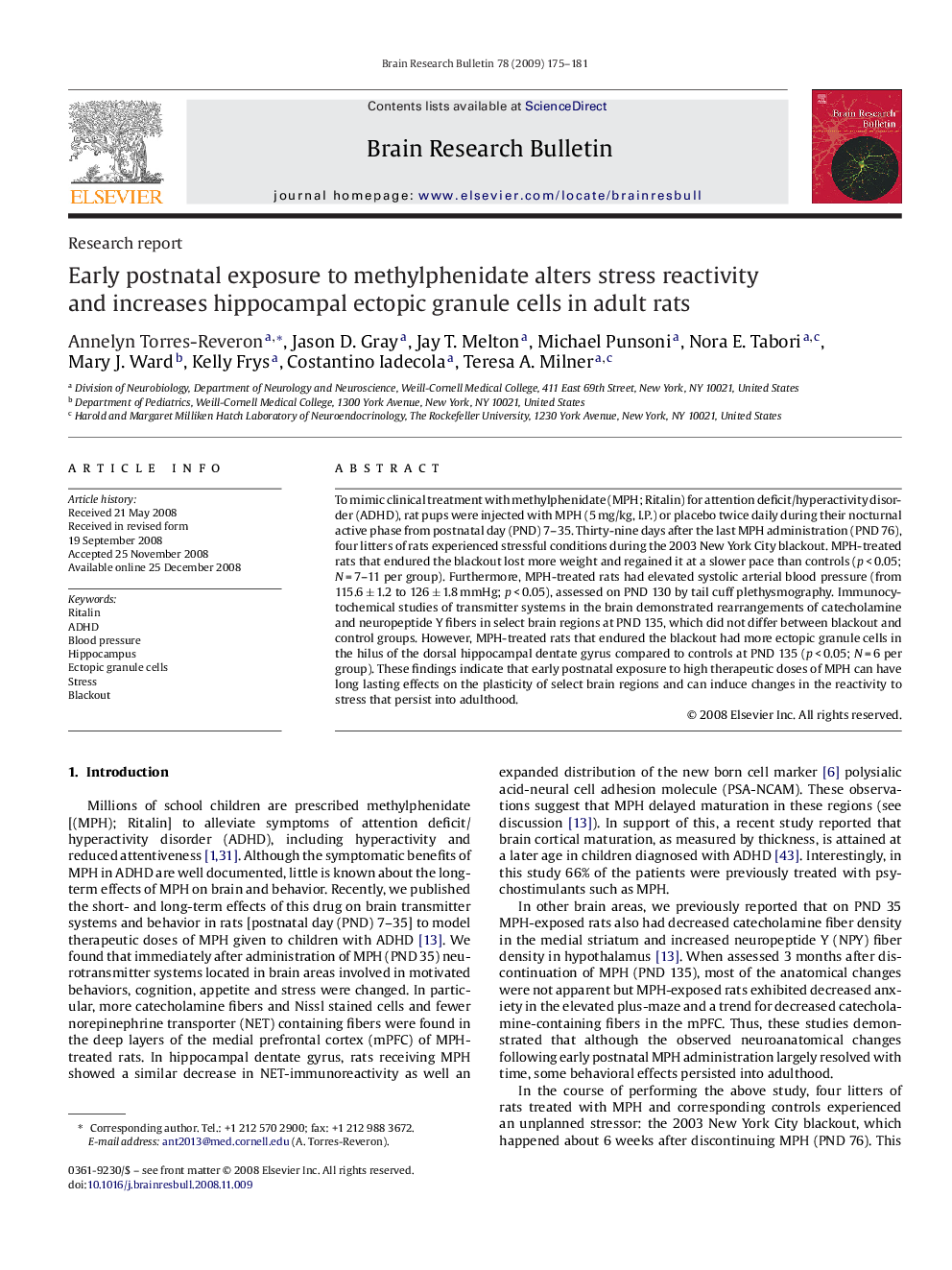| Article ID | Journal | Published Year | Pages | File Type |
|---|---|---|---|---|
| 4319834 | Brain Research Bulletin | 2009 | 7 Pages |
To mimic clinical treatment with methylphenidate (MPH; Ritalin) for attention deficit/hyperactivity disorder (ADHD), rat pups were injected with MPH (5 mg/kg, I.P.) or placebo twice daily during their nocturnal active phase from postnatal day (PND) 7–35. Thirty-nine days after the last MPH administration (PND 76), four litters of rats experienced stressful conditions during the 2003 New York City blackout. MPH-treated rats that endured the blackout lost more weight and regained it at a slower pace than controls (p < 0.05; N = 7–11 per group). Furthermore, MPH-treated rats had elevated systolic arterial blood pressure (from 115.6 ± 1.2 to 126 ± 1.8 mmHg; p < 0.05), assessed on PND 130 by tail cuff plethysmography. Immunocytochemical studies of transmitter systems in the brain demonstrated rearrangements of catecholamine and neuropeptide Y fibers in select brain regions at PND 135, which did not differ between blackout and control groups. However, MPH-treated rats that endured the blackout had more ectopic granule cells in the hilus of the dorsal hippocampal dentate gyrus compared to controls at PND 135 (p < 0.05; N = 6 per group). These findings indicate that early postnatal exposure to high therapeutic doses of MPH can have long lasting effects on the plasticity of select brain regions and can induce changes in the reactivity to stress that persist into adulthood.
